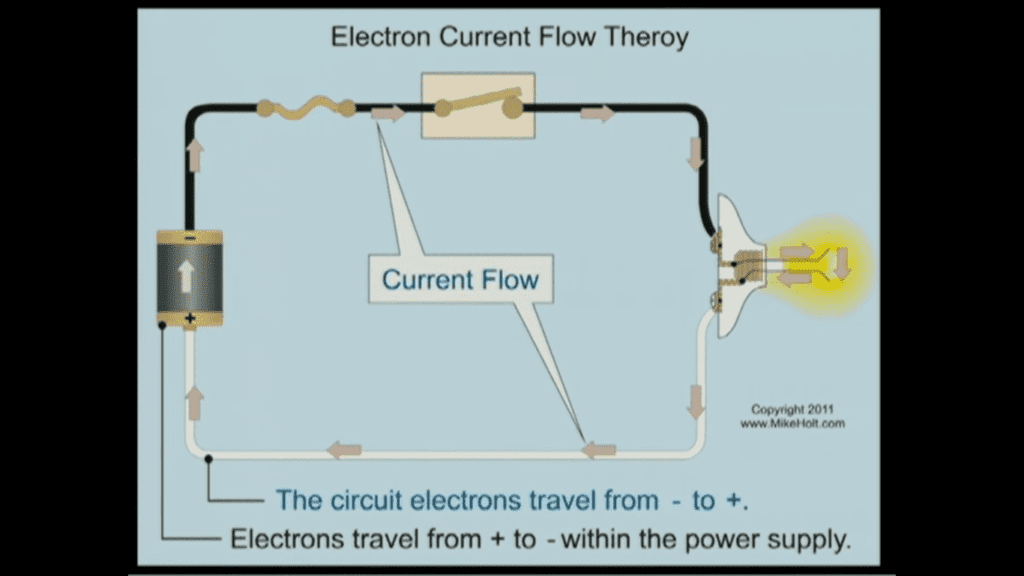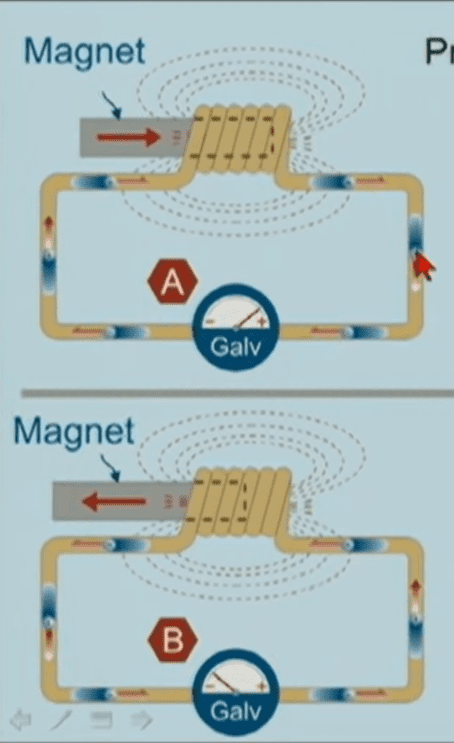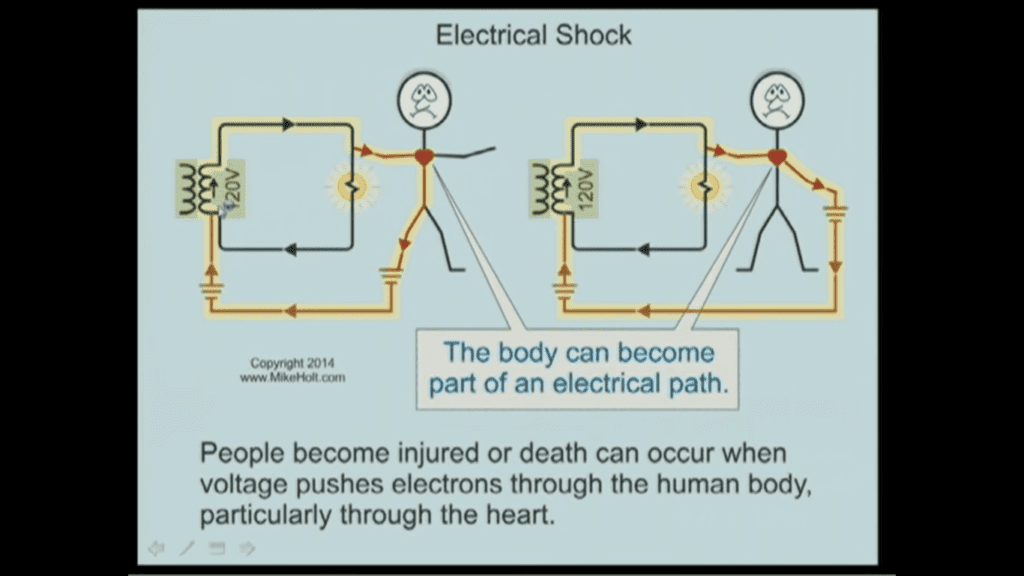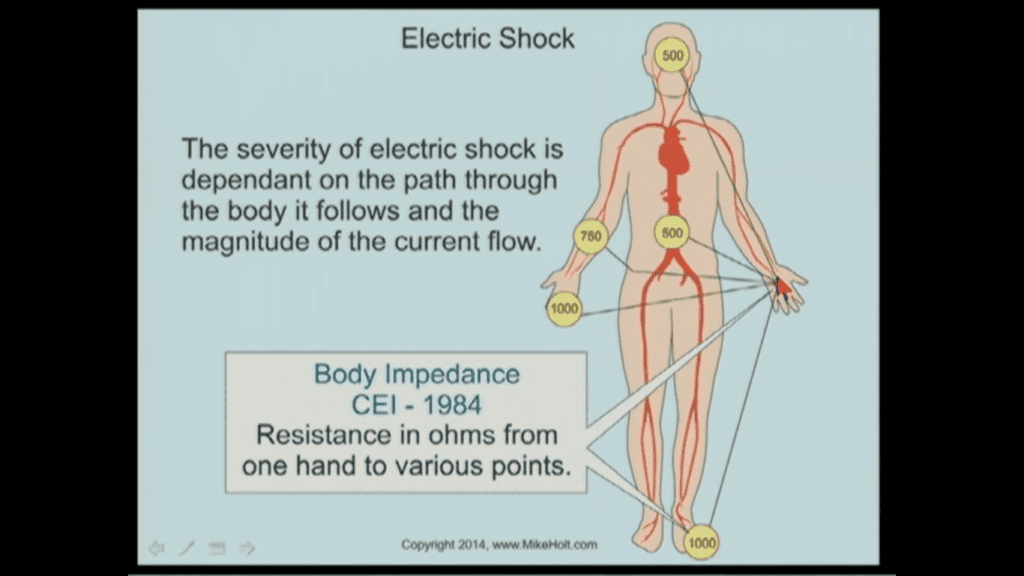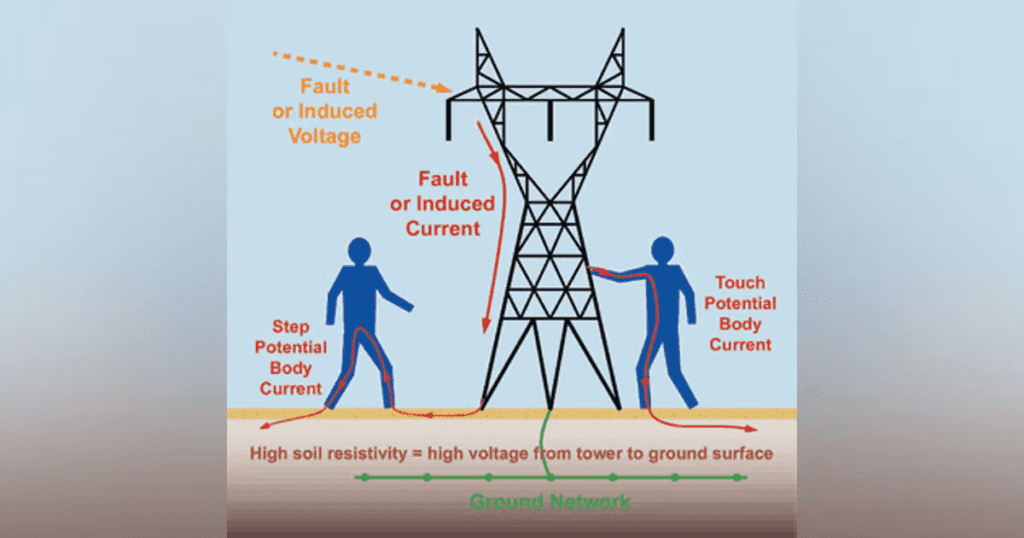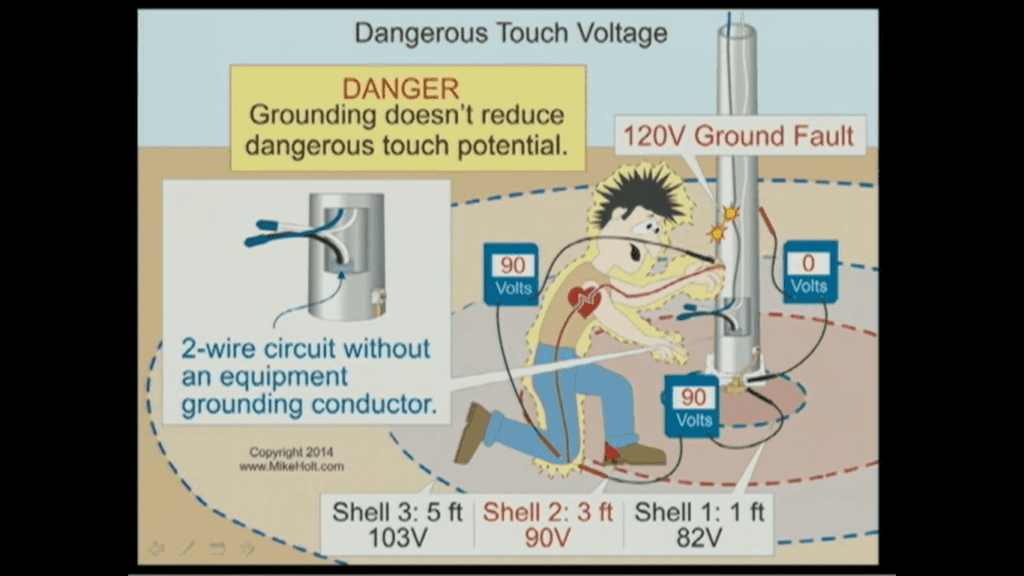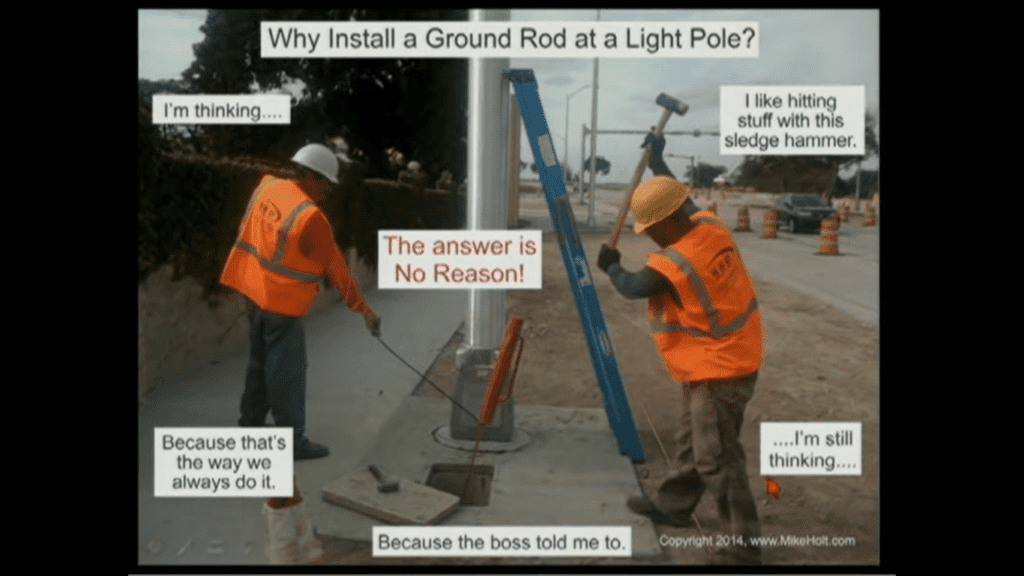The concept of grounding is surrounded by many myths and misinformation that could pose harm to you, say experts.
Electrical grounding is something that most people are familiar with. It’s in our homes, offices, and basically, anywhere there’s electrical current"Electrical current" refers to the flow of electric charges (like electrons) through a conductor, such as a wire. It's similar to how water flows through a pipe. In electrical systems,... present.
On its surface, grounding looks simple—you create a path for the excess current to flow to the groundIn the context of electricity, "ground" or "earthing" refers to a reference point in an electrical circuit from which voltages are measured, a common return path for electric current, or... and slowly vanish, protecting your appliances from getting damaged and your body from getting shocked.
But what if I told you that there are at least two myths in the above sentence?
That’s right. AC (alternating currentFundamentals of Alternating Current Alternating current (AC) is a type of electrical current in which the flow of electric charge periodically reverses direction. In contrast to direct current (DC) where...) doesn’t disappear in the ground, and grounding does not protect your body from electric shocks in case of a short circuit or ground fault.
“But I thought grounding is good for you?”

Want to Slash Your EMF Health Risks?
Want to Slash Your EMF Health Risks?
Good! Learn the one small change you should make right now.
Yes, it is therapeutic to ground, touch the earth, at the beach, in the mountains, etc. but not to residential electrical systems.
Confused? The words grounding and grounded have multiple meanings and usages so it is understandable. The ground is the earth but it is also an electrical term meaning to connect a safety wire called the equipment grounding conductorThe term "conductor," in the context of electromagnetic radiation, refers to materials or substances that allow for the efficient passage of electromagnetic energy, including both electric currents and electromagnetic fields.... (EGC). The earth/ground is needed to dissipate lightning but will not dissipate man-made sources. We do not want the earth involved in electrical circuits as it will hinder the EGC from tripping a breaker.
We hope you won’t be more confused after reading this post. It gets complex so this needs to be sorted out. We’ll talk about electrical current, purposes for grounding, and try to clear up the myths surrounding it, so you can take the necessary steps that actually help you protect yourself and your loved ones.
And to do so, we’re going to reference a fantastic video by Mike Holt, an authority on the subject.
Mike Holt is a master electrician and National Electrical Code® expert who has written and published hundreds of electrical training books, videos and articles, and has taught thousands of electrical code seminars across the US and internationally.
His company, Mike Holt Enterprises, has been serving the electrical industry for over 40 years, creating and publishing books and DVDs, and is the premiere online training and curriculum support for electrical trainers, students, organizations, and electrical professionals.
Please see this video of Mike explaining these myths around grounding. If you can, watch all of it to learn the electrical fundamentals first. Then if you’d like to keep reading, we’ll explain some the highlights. Notice below the time stamps that address some specific grounding myths.
Grounding – Safety Fundamentals (1hr:13min:19sec)
34:58 Myth 1: Grounding (earth) provides the path necessary to clear a ground fault.
36:13 Myth 2: Current take the path of least resistance"Resistance" is a fundamental concept in the field of electricity and electronics, central to understanding how electric circuits operate. It refers to the opposition that a material or a device... to ground.
37:09 Myth 3: Grounding brings everything to zero potential. This reduces touch and step voltage to a safe value.
44:11 Myth 4: More grounding the better!
52:49 Myth 5: Grounding a light pole is necessary and required by the NEC.
55:49 Samples of Myths!
1:01:39 FACT: Grounding doesn’t protect against electric shock.
Those are some of the grounding myths Mike addresses.
If the video isn’t self explanatory, we’ll try to help repeat and affirm in this post. You’ll find video clips embedded throughout this post (the different video embeds all have the same preview image, but they will play different portions of the referenced video).
So, let’s begin.
What is Current?
You may be familiar with atoms. They’re the smallest unit of ordinary matter and basically the building blocks of almost everything in this universe. An atom consists of three subatomic particles: protons, electrons, and neutrons. And they carry different charges, namely positive, negative and neutral.
Electric current is from charges like electrons moving or flowing on a wire in a circuit (more on circuits below.) This means your TV, light bulbs, refrigerator, and anything that runs on electricity receives power"Power" in a scientific context refers to the rate at which work is done or energy is transferred. In simpler terms, it's how fast something is using energy. For example,... from this simple process of electrons flowing on a wire in a circuit.
There are two types of current, namely AC (Alternating Current) and DC (Direct Current.) DC travels in one direction. AC travels back and forth. Lightning is a natural source and is DC. The only thing that goes to earth is lightning. All other man-made electrical AC and DC require a circuit and can use the earth, but do not go to earth and stay there. Did you know the gas company puts DC on its gas pipes to prevent from them from corroding? That requires a circuit.
Electrical Circuit
A circuit is simply a path for current to come from a source, do work (power up devices and appliances), and return to the source. It makes a circle. Both AC and DC man-made currents need a complete circuit to work.
Here is how a circuit works.
Think of a battery powering a light bulb. The battery has a positive and a negative end. Opposite charges attract. Negative electrons are attracted to positive charges. And as soon as you turn on the switch, the battery starts releasing electrons through its negative end (contains an excess of negative electrons) and they travel on the wire.
The charges then reaches the bulb, powers it up, and returns to the battery through the positive end, completing a circuit.
And same goes for AC (alternating current pulses forward 60 times per second in the US) that comes to your house through power lines. Unlike DC’s single-direction movement, the difference is that AC alternates back and forth. For instance it can start from the negative end, and then does the same from the positive end.
How Do You Get an Electric Shock?
Imagine a 120-volt (voltage is the pressure) AC source pushing current to power a light bulb in a circuit. The basic operation is that the current leaves the source (transformer), goes to the bulb, energizes it, and returns to the source (transformer).
Now imagine that you touch a naked wire in this circuit. As soon as you do that, your body becomes pushed on by this 120V and current tries to go through you. Rule: current takes all available paths back to its source. This means the current will still pass through the bulb, and wire, but it will also go through your body, if it finds a path to return to its source.
Now the level of danger that you’re in when you touch an electrically energized object depends upon the entrance and the exit pathway on your body that completes this electrical circuit. There are two points, an entry and exit point from your body. Say that you’re standing on the ground, with bare feet. The current will start from your hand (electrical contact entry point), through your body, out your feet (exit point), and through the ground, there-by finding a way back to its source, the transformer, which started this circuit. There can be larger circuits too like back to a sub-station.
Similarly, say that your other hand is touching a metal pipe. In this case, the current will also flow from one hand, across your chest and exit the other hand.
The different parts of your body naturally have different levels of resistance to current, and this resistance is measured in a unit called the ohm (Ω). The diagram below shows how much resistance different parts of your body have.
Besides your body’s natural ability to resist some current flow, the state of your skin at the time of receiving an electric shock is a major variable. For example, if your hand or body is wet, the severity of damage from that electric shock is significantly amplified. The skin’s ability to impede the flow of current disappears when wet. Our internal body’s resistance is considered a constant, about 500 Ω (ohms). The skin, when dry can be 1000 to 1,000,000 Ω, a wide range of possibilities. But when wet, the skin is 0 Ω so all that is left is the internal resistance of 500 Ω (some say 300 Ω).
Of course, if you are wearing rubber soled shoes or rubber gloves, the entry/exit paths have much more resistance and current is reduced, or eliminated. The skin blocks DC better than AC. High frequencies (above 2 kHz) and wet conditions (pool, lake, marina, bath, sink, shower, etc.) eliminate the skin’s ability to impede current.
No matter the type of current, AC or DC, they leave the source and return to the source—and it will go through your body if connected to that circuit.
Grounding: What Does it Not Do?
Short circuits are common. What’s a short circuit? It’s an electrical short cut, or an unintentional path that increases current to be higher than we want. Because of the dangers of a short circuit, we try to make our electrical systems safer, and using equipment grounding is one of them.
Grounding provides a path of least resistance for electrical current to flow to the ground. This removes any excess charge from contact surfaces like metal body of appliances, making it safer for you to touch your appliances even when there’s a short circuit.
Wrong! Unfortunately this is what many people believe. Current doesn’t flow to ground. Grounding/earthing doesn’t remove excess charges from electrical faults. Grounding does NOT protect you from an electrical fault.
In 2009, The New York Times covered the story of a green beret who was electrocuted in a shower in his barracks in Iraq. After completing a mission, the soldier returned to his barrack and started taking a shower.
Unknown to anyone, there was a fault (live wire making contact with metal frame) in the motor that pumped water. Since this was a metal building with metal pipes and fittings, the fault energized the whole building. So, when he turned on the shower, his body came in contact with that fault current, which electrocuted him. There were ground rods installed around the building but they didn’t help trip off the motor’s circuit breaker. The belief that the earth dissipates AC overcurrent fault conditions is false. Tripping the breaker off is the only thing that will stop the current in this circuit from energizing the pipes.
Another story is from Miami, where a boy was electrocuted in a bus stop shelter. As soon as he sat on the metal bench and removed his shoes, allowing his bare feet to touch the ground, he received an electric shock.
Upon investigation, they found that the jumper, which creates a safe path for the current to flow back to the source, was missing in the transformer. Now, even though this facility had a 4-foot grounded rod, it didn’t save the 12-year-old.
So we see that the concept that grounding protects you from electric shock is a myth.
But, if that’s the case, why do we ground? What is grounding? Unfortunately this word has been so destroyed it has to be clearly defined. The ground is earth, soil. Grounding is attaching something to the earth, driving a rod into the earth. BUT, it is also a commonly used term for an equipment grounding conductor (EGC). The EGC is a safety wire that connects the metallic frame of equipment back to the breaker panel. The EGC’s purpose is to take fault current (live wire accidentally touching the frame) back to instantly trip off the breaker. It creates an “effective ground-fault path.” And what is that?
To reduce the amount of time we are exposed to an electrical fault, we need to have an effective ground-fault path.
The National Electrical Code (NEC) describes the ground-fault current path as “an intentionally constructed, low-impedance electrically conductive path designed and intended to carry current under ground-fault conditions from the point of a ground fault on a wiring system to the electrical supply source and that facilitates the operation of the overcurrent protective device or ground-fault detectors.”
Low-impedance means low resistance, or where current easily flows without being blocked or impeded. Earth has much more resistance than a copper wire. A ground-fault condition means a live wire accidentally and unintentionally touches a metallic appliance frame or the ground/soil. The overcurrent protective device is your circuit breaker in your electrical panel. Nowhere in this description is the earth or the ground/soil beneficial or needed or wanted. In fact, it is the enemy of an effective ground-fault path! NEC 250.4(A)(5) says “The earth shall not be considered as an effective ground-fault current path.“
A properly “grounded” electrical system directs AC fault current effectively (through a low impedance path) from a faulty appliance back to trip the breaker off, quickly and efficiently, on the wires, NOT to or through the earth. An effective ground-fault path to trip breakers, is not through the earth, it is on wires.
This is the main principle behind an effective ground-fault path. This is essential for overcurrent protective devices to work. With a wire dedicated to tripping the breaker, we are much safer than ever using the earth. The equipment grounding conductor (EGC) is this safety wire that connects to the frame of the appliance back to the circuit breaker.
Unfortunately, the EGC also has a dual purpose to address DC surges from lightning. The EGC also has a path to earth. The EGC is connected to another wire, the return current wire called a grounded conductor (AKA the neutral). This grounded conductor is required to be grounded, stuck into the earth, through a wire called the grounding electrode conductor (to the ground rod or grounding electrode) at one place only, at the main service disconnect, the main breaker. This is a major issue regarding the multi-grounded neutral system which has serious problems and we won’t delve into it here.
The most essential point to arrive at here is there are two primary “grounding” functions in the home. AC needs to trip breakers and DC lightning needs go to earth. These should not be confused. AC requires a circuit, DC lightning does not. AC returns to its source and DC lightning goes to earth (also earth to cloud, cloud to cloud. cloud to earth, etc.) These systems save you from being shocked to death. They have nothing to do with bringing in so-called beneficial earth electrons or anything else that seems like a healthy good idea to be touching these grounding conductors. They are contaminated with grid frequencies, uncleared faults and surge currents.
Grounding Provides the Path Necessary to Clear a Ground Fault
“Grounding” is used here as an EGC, not earthing. A ground-fault is one type of a fault in an electrical system caused by incorrect wiring, damaged appliances, or worn wire insulationIn the context of electromagnetic radiation, the term 'insulation' refers to a material or substance's ability to impede or resist the transmission or propagation of electromagnetic waves, including electric and.... It’s a type of short circuit, and it occurs when electrical current takes an unintentional pathway on a “grounded” (EGC connected) frame, or metallic structure or directly to the ground. Ground has two meanings, the EGC and the earth. If you grounded something you either attached an EGC, or you connected it to earth. But the EGC should not use the earth to be effective.
A simple example would be a naked wire touching a metal box. Now since electricity takes all available paths to return to its source, a ground-fault energizes everything on the path, the frame, the wire, and anybody touching it.
As we already discussed, current comes from a source and returns to the source, so, in case of a ground-fault, the current will return through unintended pathways, like you’re metal plumbing, for example. And when you touch the energized metal, you can get a severe electric shock.
Importance of Grounding
Grounding is not only important—it’s necessary for anywhere electricity is present. And here’s why.
The National Electrical Code Handbook states that there are three basic reasons for grounding:
(1) To limit the voltages caused by lightning or by accidental contact of the supply conductors with conductors of higher voltage.
(2) To stabilize the voltage under normal operating conditions (which maintains the voltage at one level relative to ground, so that any equipment connected to the system will be subject only to that potential difference).
(3) To facilitate the operation of overcurrent devices, such as fuses, circuit breakers, or relays, under ground-fault conditions.
It Protects Against Electrical Surges
Electric surges can be from DC lightning and from AC power problems. Statistics say that lightning strikes the earth at least 100 times a second. That’s 8 million times a day and about 3 billion times a year. Sometimes, these lightning strikes hit the power lines that send electricity to your home.
(1) is this scenario, addresses lightning, a DC natural source. Then it addresses the man-made problems due to grid wires touching house wiring.
(2) is more about stabilization, or making everything connected together so it rises and falls in voltage together. You can imagine how that is good for wiring but not for a human that happens to be around equipment that rises and falls in high voltages.
(3) is purely to activate circuit breakers and is talking about the EGC.
Electrical surges forces an electrical system to accept overwhelmingly excessive current, resulting in a significant power surge. These power surges can completely destroy your electronics and electrical appliances, and often does. When you ground your electrical system, DC sources like lightning take all paths to earth. By providing a ground connection, that energy"Energy" is a fundamental concept in physics, often described as the ability to do work or cause change. In everyday terms, it's what is needed to move things, heat them... surge can be better distributed but also dissipated in the earth.
Besides lightning, there are many other reasons for power surges in your home. For example, there can be a massive AC power surge when your utility company is doing a power grid switch. That is an AC source, different than lightning (DC). There is nothing that can save your house appliances from a direct hit by lightning. We are talking about local and indirect environments around lightning strikes that become energized with DC energy.
AC grid power surges are brought directly into our homes through the multi-grounded neutral system but the concept is if everyone shares the problem, it is reduced to any one person or location.
Helps Direct Electricity
A “grounded” electrical system directs AC fault current effectively (through a low impedance path) from an appliance back to the breaker, quickly and efficiently, not to or through the earth. This is the main principle behind an effective ground-fault path. This is essential for overcurrent protective devices to work. With a wire dedicated to tripping the breaker, we are much safer that using the earth. DC from lightning has a path, directed to earth through the grounding electrode conductor at the service disconnect.
Prevents Electrical Fire
An effective ground-fault path through an equipment grounding conductor to quickly trip a circuit breaker, minimizes a cause of fire. It’s something that should already be established in your home (except homes built before the 70’s). If there’s a problem preventing an effective ground-fault current path, you need to ensure that it’s fixed immediately.
Side note: Ground fault circuit interrupters (GFCI) are an additional feature that trip at only 5 mA imbalance between the hot and return current paths, which assumes the current is returning on the equipment grounding conductor. Also, arc fault breakers sense tiny jumps of current between contacts which are very hot and lead to fire.
Other sources of fires from arcing have to do with water pipes carrying current from house to house and wire mesh in the walls can become energized by this current sparking on nails, and other metallic objects. All the grounding in the world won’t remove this current because of the way the pipe is grounded to our service panel. See The Water Pipe Solution to remove this source.
Myths Surrounding Grounding
So, grounding is super important, as you can see. But there are a lot of myths that surround grounding. And that would’ve been okay if it didn’t put us into danger. It is important to remember the 2 main differences between AC and DC and purposes for “grounding.” Man-made sources (AC and DC) require a path on wires back to trip a breaker and natural sources (lightning) requires a path to ground. Don’t confuse the two. Man-made sources are unhealthy and the associated wires are contaminated with harmful current and dirty electricityDirty Electricity, also known as electrical pollution, refers to the presence of irregularities or distortions in the normal electrical current within a wiring system. These distortions, which deviate from the... (high frequencies) from appliances.
Here are some of the things many people think grounding does, but it doesn’t.
Current Takes the Path of Least Resistance to the Ground (False statement)
For ages, we’ve known that current takes the path of least resistance to the ground.
Because we have this misconception, we simply bury a grounding rod, assuming that it will provide a path for the fault current to go to the ground. But in reality, the ground rod does nothing to de-energize the objects affected by the fault.
Let’s go back to this, “current starts from a source and returns to the source.” Now, what’s missing in this statement is that the current takes any and ALL available paths to return to its source. Be it through the ground, metal systems, or a human body.
So, suppose there’s a fault in your electrical system. If you touch an energized object, you’ll receive an electric shock, even though you have a proper grounding system installed, especially with a buried a metal rod connected to the grounding wire in your backyard.
Grounding Brings Everything to Zero Potential
Another grounding myth we have is that it brings everything to zero potential and brings touch and step value to a safer level.
In simple words, what this myth says is, take an insulated rod, stick it to the ground, and attach 120-volt current to the rod, and the person standing next to the grounded rod bare feet will be completely safe. False!
See the image below to understand touch and step potential better, from leg to leg.
Grounding doesn’t cancel the current out, just adds pathways for it.
You need a proper equipment grounding conductor installed in your electrical system to make it safer (by instantly tripping off the breaker) for you to safely touch and step on conductive areas when there’s a fault.
If there’s no equipment grounding conductor, the whole area will be energized, creating a voltage gradient.
More Grounding the Better
Many people think that the more grounding you do in your electrical system, the safer you’ll be. But, in reality, grounding more than required can cause several malfunctions in your electrical system, wreaking havoc on the electricity-dependent equipment in your home and potentially your life.
National Electrical Code® expert, Mike Holt, explains it this way: Just like adding a higher octane fuel than what’s required, causes an unnecessary rise in expenses, and possibly damages your vehicle, grounding more than what the NEC recommends, can do the same thing to valuable equipment in your home. More ground rods means more paths for current in and out of the house. The grid has current returning to the sub-station and if you have more than one ground/earth connection to/from your home, you will be absolute certainty, bring grid current into your wiring.
Grounding a Light Pole is Necessary and Required by the NEC.
When installing a light pole in front of the house, most of us bury a grounding rod in the soil, thinking it will protect the lamp from electrical surges.
And we’ve also been led to believe that grounding a light pole is necessary and required by the NEC. But in reality, the grounding rod does almost nothing to protect the light pole from lightning surges. Look at the image below.
That’s how powerful lightning strikes are. Do you really think that a simple rod buried in the mud can protect the fixture on the top of the pole from this much energy?
Mike holt says, “no.”
The Lesson: Final Thoughts
After reading through this whole post, I’m sure you’re wondering what’s the real lesson here.
Grounding your body does not protect you from harm.
Will grounding keep voltage rise to a minimum and reduce your hazard? NO. Grounding appliances (establishing and effective ground-fault path with an EGC) certainly minimizes the time you are exposed to faults. You don’t want to be touching these grounded appliances to begin with but if so, they had better be associated with an effective EGC to trip the breaker and NOT associated with a ground rod.
We’ve already established that grounding is necessary to reduce the intensity from grid based surges but it can also bring in current surges from the grid, a double-edged sword.
Your grounding system isn’t protected from grid based low level current from the multi-grounded neutral system and this is usually found on metal water pipes. Everything grounded everywhere helps the power company tolerate grid surges (everyone shares their problem). Beyond the grid, wiring and appliance problems in the home add current to the grounding system far below the threshold of recognition by a circuit breaker. The grounding system is a “dumping ground” and has unhealthy amounts of current and dirty electricity frequencies. It is for attaching to appliances, not humans.
So, what can you do?
First of all, don’t rely upon ground rods for therapy or electrical safety. Ensure that the electrical wiring in your home is in top-notch condition with an effective ground-fault path set up in your circuits. A checkup by a certified and qualified electrician can help expose errors in your electrical system.
Grounding (an appliance) means establishing a path for the EGC to trip a circuit breaker (but never going to/through the earth) and grounding for lightning creates a path to earth. They have different purposes and destinations.
Neither of them involve being beneficial therapeutic treatments for your body. They are established to handle worst case scenarios to save your life. Our grounding system is connected directly to the grid lightning surge arrestors and primary return current path of the power grid. For further explorations see the book Killing Current, by Andrew McAfee.
Prolonged exposures to your grounded appliances or the electrical grid is unhealthy and dangerous. Protection is advised when touching any grounded object in your home. If you must use a grounding mat or bed sheet, please consider the NCB.
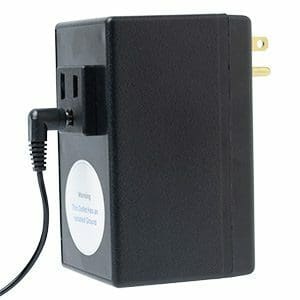
Electricity, though beneficial, is hazardous. So, make sure that you’re handling it properly. It’s for your own safety and that of your loved ones.


